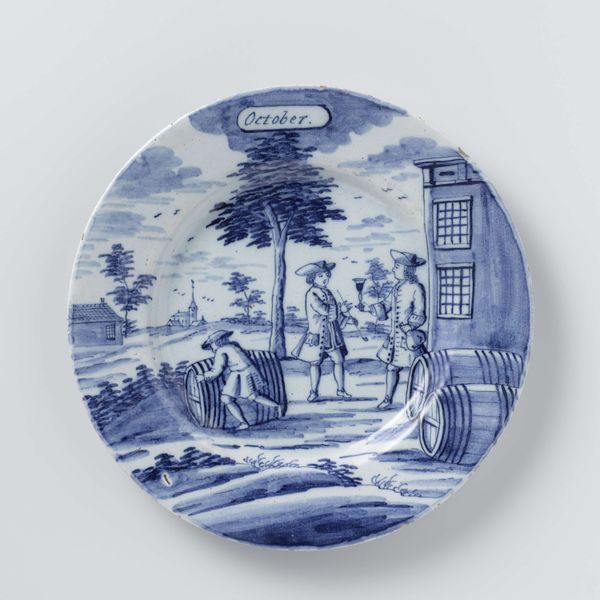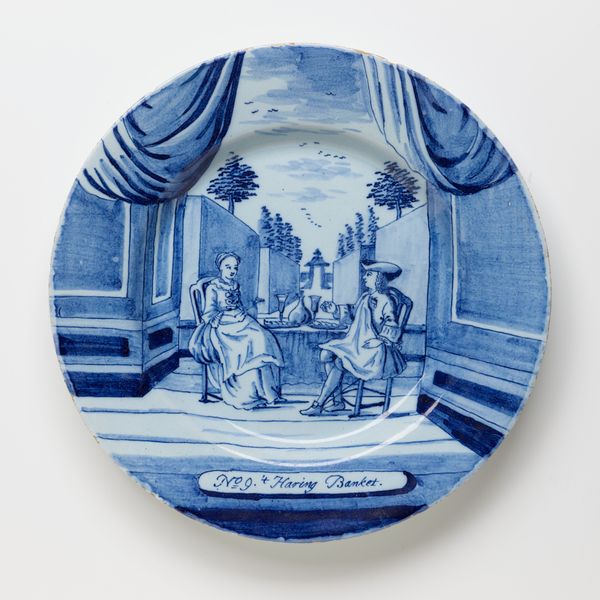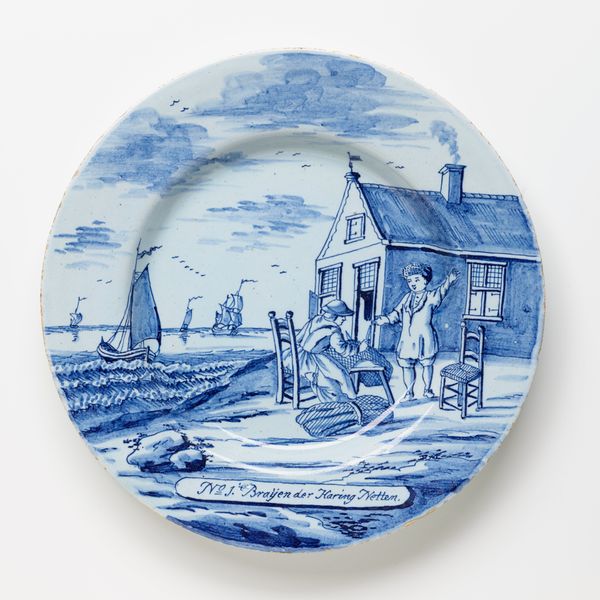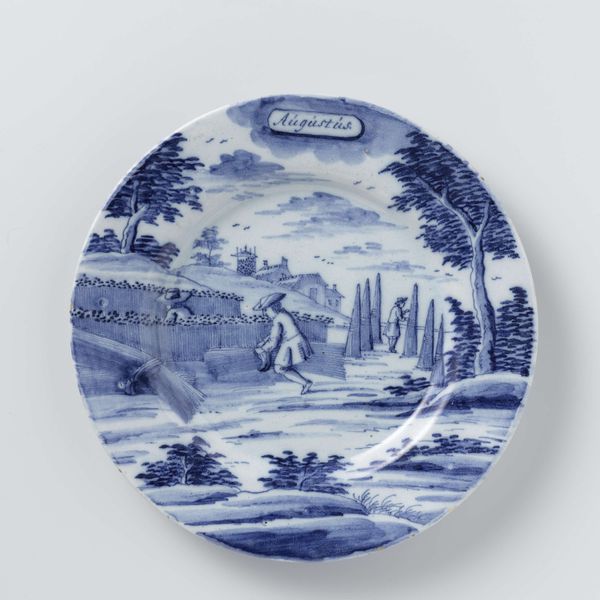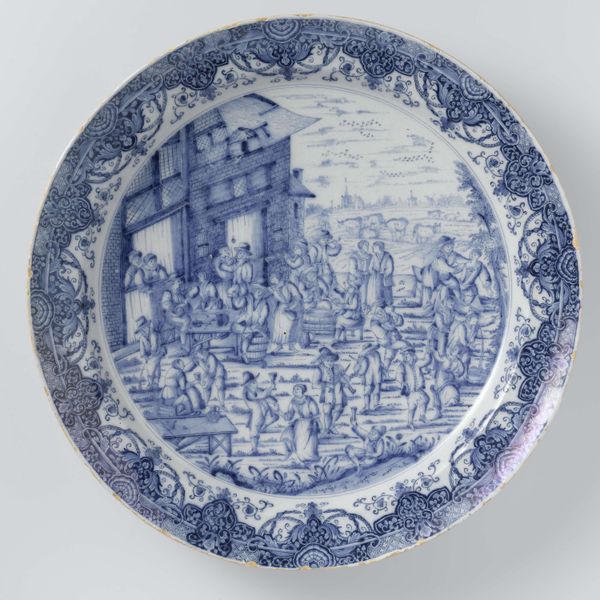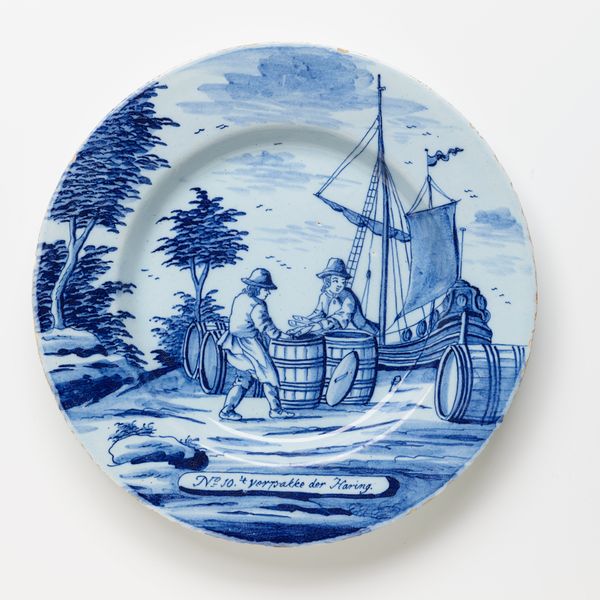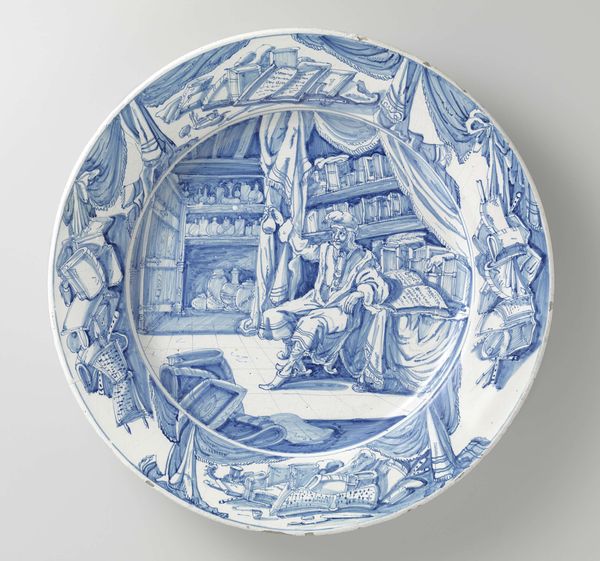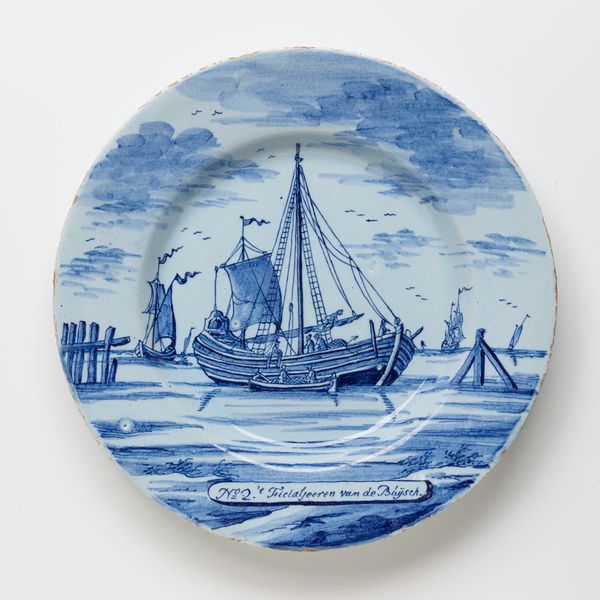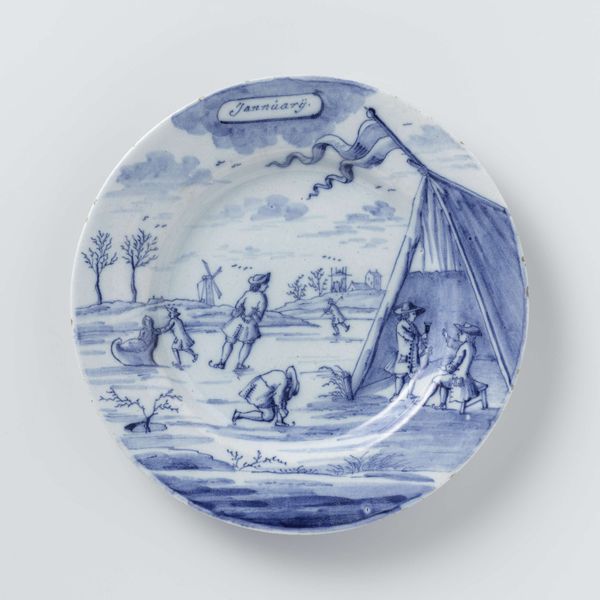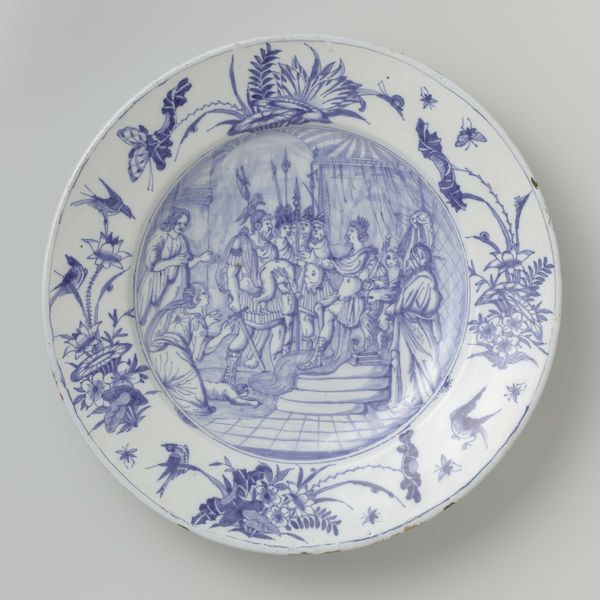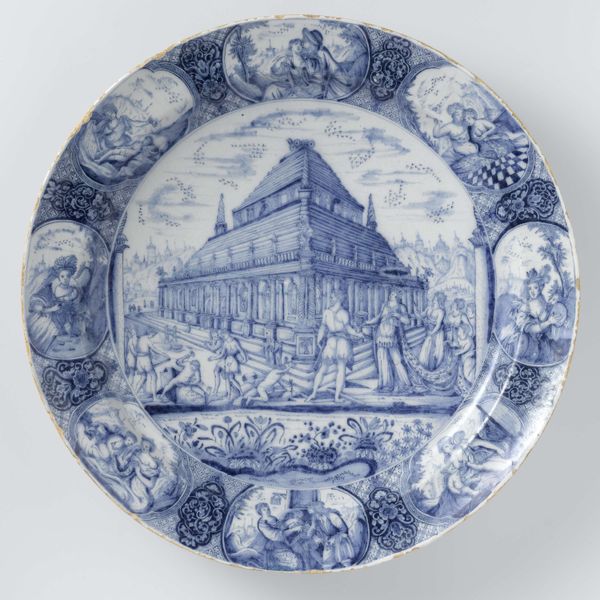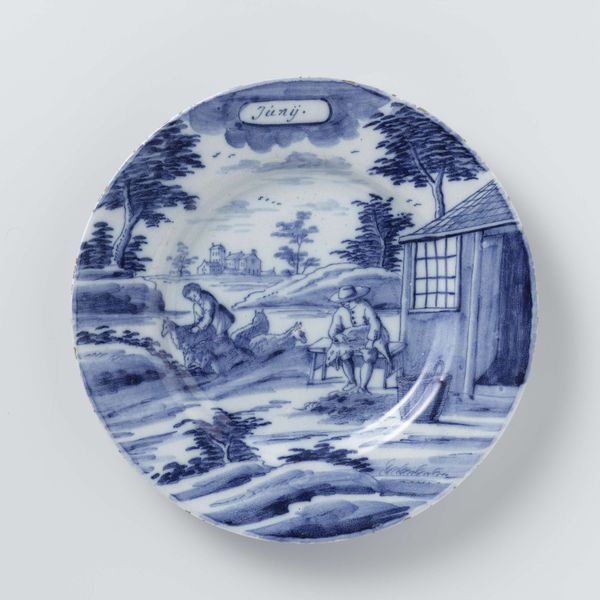
painting, ceramic
#
dutch-golden-age
#
painting
#
landscape
#
ceramic
#
figuration
#
genre-painting
Dimensions: 1 1/16 × 9 × 9 in. (2.7 × 22.86 × 22.86 cm)
Copyright: Public Domain
Curator: This intriguing object from around 1780, currently held at the Minneapolis Institute of Art, is titled "No. 11." It hails from the Porcelain Axe (Porceleyne Bijl) Factory. Editor: It's captivating! The blue-and-white glaze creates such a tranquil, almost dreamy scene. Is this delftware? Curator: Precisely! It is a type of tin-glazed pottery that became popular in the Netherlands, closely related to Chinese porcelain. Look at the labor involved in the decoration itself. This isn't merely functional; it represents skilled craftwork and a social yearning for luxury goods, accessible through Delft's own manufacturing networks. Editor: Absolutely. It feels almost subversive. Taking this popular genre scene, a glimpse into daily life, and immortalizing it on something we eat from, transforming everyday use into a curated experience. These plates would have been prominently displayed within homes as testaments of taste and access to wealth, transforming domestic spaces into exhibitions. Curator: I agree! Moreover, notice the scene itself: a man and woman interacting on a shoreline. This plate's existence is part of a broader social context—of Dutch maritime power, trade, and the depiction of the everyday. Genre scenes experienced increased demands by consumers, reflecting a growing fascination with secular subject matter within fine and decorative arts Editor: Thinking about who owned it is so interesting, too. A piece like this elevates simple dining, connecting people to images and narratives of the sea in a symbolic and tangible way. Curator: Exactly. This factory produced accessible objects during an age when porcelain meant far more than a material object, and it held implications in the household setting, social value, taste, status and identity of a person or a family. Editor: What a fascinating glimpse into the social fabric and the everyday life, as captured through a single plate! Curator: Indeed. It makes you consider what mundane objects of today will reveal about our time centuries from now.
Comments
minneapolisinstituteofart about 2 years ago
⋮
This series of twelve plates is painted with scenes related to fishing for herring. While undistinguished in appearance, this silver fish was an abundant source of food in the North Sea and supported a vast fishing industry in the Netherlands. Herring fishing accounted for such a large percentage of the wealth of the Dutch Republic that Amsterdam was said to have been built on herring bones.
Join the conversation
Join millions of artists and users on Artera today and experience the ultimate creative platform.

